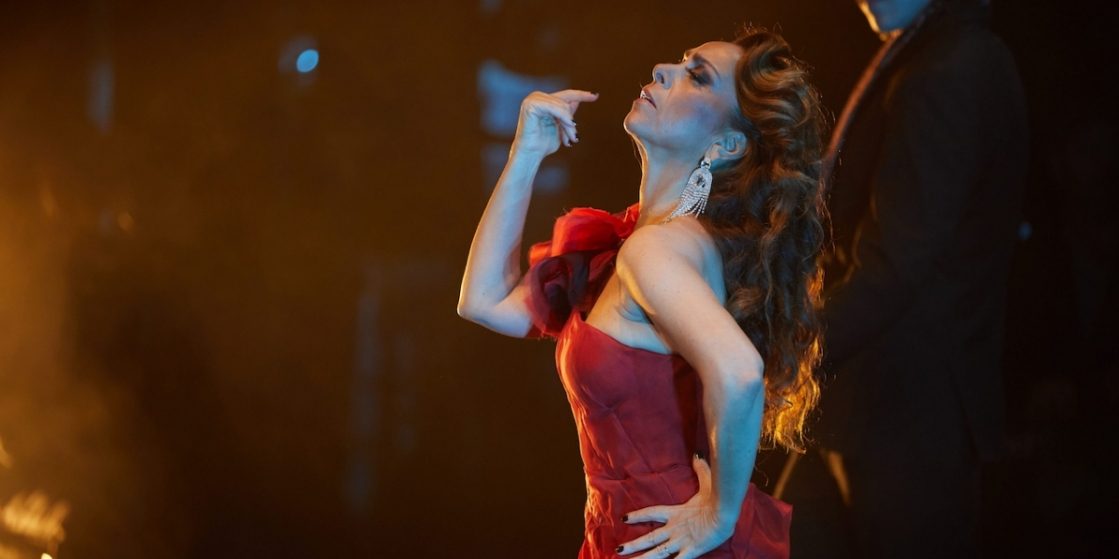Karen Ruimy has had a remarkable life. Born to a Jewish family in Morocco and then educated in France, she first worked with great success with Finacor before reinventing herself as a spiritual and psychological writer, and from age 38 as a flamenco dancer, and philanthropist for feminist empowerment. In this show she pairs her flamenco skills with a selection of jazz standards, all supported by a very strong array of artists – dancers, singers, and a seven-piece band of formidable skills. It is an engrossing and entertaining evening.
This show is more a juxtaposition of jazz and flamenco than a close engagement. The first half hour or so is more voice than dance and then gradually guitar chords and flamenco moves and routines take over from voice and band, coming to dominate in the latter sections. The diva also changes her costume three times in all and that gives fine solo opportunities for the band and for her fellow flamenco artists, singer Francisco Blanco, dancer Paco Hidalgo, and a very stylish flamenco guitar player. All the items on the long playlist have their individual charm and appeal but it is it something of a missed opportunity that the ‘meeting’ of jazz and flamenco does not dive deeper into their related patterns of syncopation and repetition and variation. Only Paco Hidalgo explores this territory in some of his solo work.
Ruimy has a reliable, characterful voice and her husky, confiding style is particularly well suited to the songs she delivered mostly in French. ‘Stormy Weather’ profited particularly from this treatment, and other numbers where she was shown to advantage as a singer included ‘Dream a Little Dream of Me’, and feisty versions of ‘These Boots They are Made for Walkin’’ and ‘Seven Nation Army.’ The band was top-notch both as an ensemble and as a bunch of soloists. There were plenty of opportunities for scintillating solos on acoustic guitar, violin, drums, and keyboard that perhaps presented the best spontaneous jazz opportunities of the evening.
Ruimy’s flamenco collaborators were just as impressive in technical skill and expressive range. Blanco’s effortless soaring melismatic singing evoked the eerie passionate inwardness that is crucial to flamenco art, and Hidalgo’s dance solos and duets with Ruimy strutted and stamped in fierce pride while weaving graceful, poised patterns with his upper body, and in one particularly effective number, with a broad-brimmed hat as well. All the artists here, including Ruimy herself, took you fearlessly into the idiom with both intensity and control.
I am not so sure that the backing singers and two male dancers that were prominent in the opening and closing sections were really necessary – they added decorative curlicues to what was already a well-balanced and technically skilful performance. Moreover, the very limited space on stage meant that the dancers in particular had little room for manoeuvre, let alone error. The audience was more anxious for them than concentrated on their contribution.
Both programme and performers were very satisfying and rewarding; but if this show is repeated I would suggest a deeper engagement and inter-penetration between the jazz and flamenco elements – something that the talent on stage could readily embrace – while also more commentary from Ruimy on her rich and varied life-story would add an extra human dimension, and link the materials more effectively.

